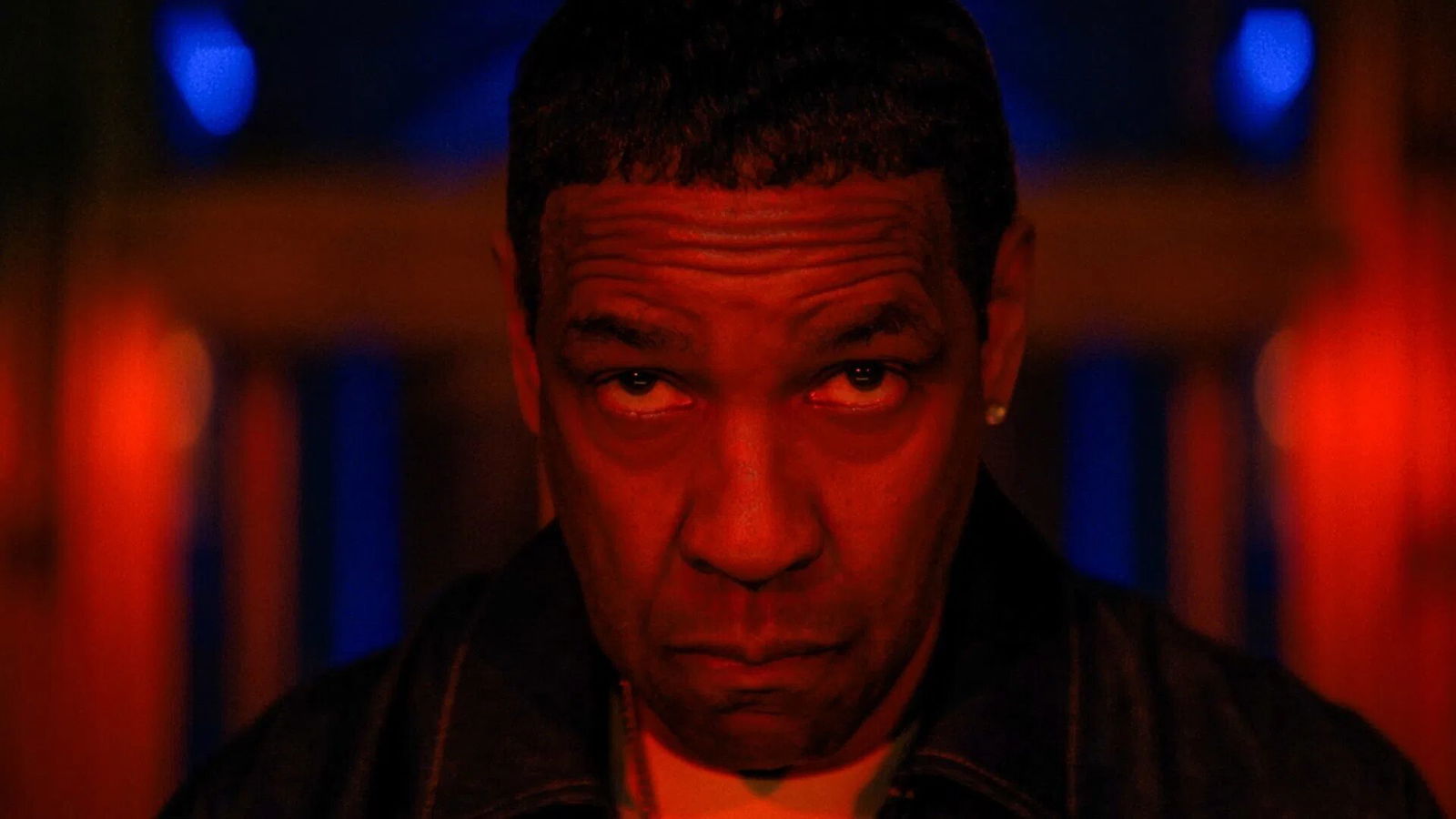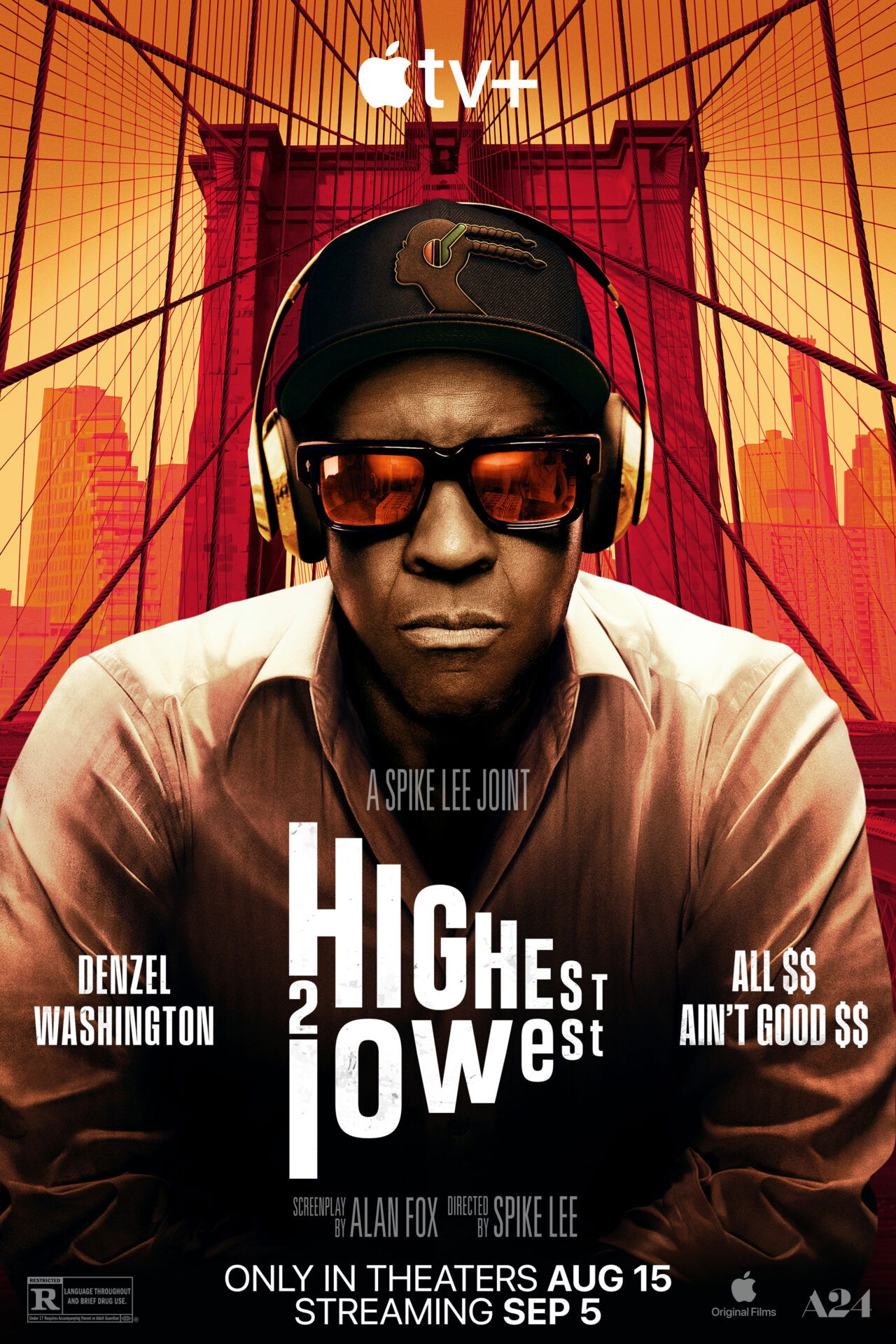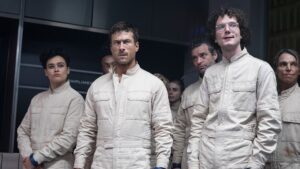When legendary director Spike Lee announced his newest film, Highest 2 Lowest, would be a “reinterpretation, not a remake” of Akira Kurosawa’s 1963 classic thriller High and Low, there was a lot of worried chatter across the internet, mainly due to his disastrous 2013 Oldboy remake, a movie he disowned before it was even released. The worries were tempered when he revealed he would be reuniting with Denzel Washington for the first time in nearly 20 years. Thankfully, Highest 2 Lowest manages to pay homage to the original while unmistakably remaining a Spike Lee joint.
The general premise is essentially the same as the original film (and its source material, the 1959 novel King’s Ransom), updating the original’s shoe company in postwar Japan to the music industry in New York City. Washington plays David King, the CEO and co-founder of Stackin’ Hits Records, a man known for having “the best ears in the business” when it comes to talent.
However, the company’s biggest successes are long behind them and in the film’s opening moments, they are preparing for a full-scale buyout. Wanting to preserve some part of his legacy despite having sold his shares years ago, David pools together his and his wife Pam’s (Ilfenesh Hadera) assets to buy back a controlling share of the company.
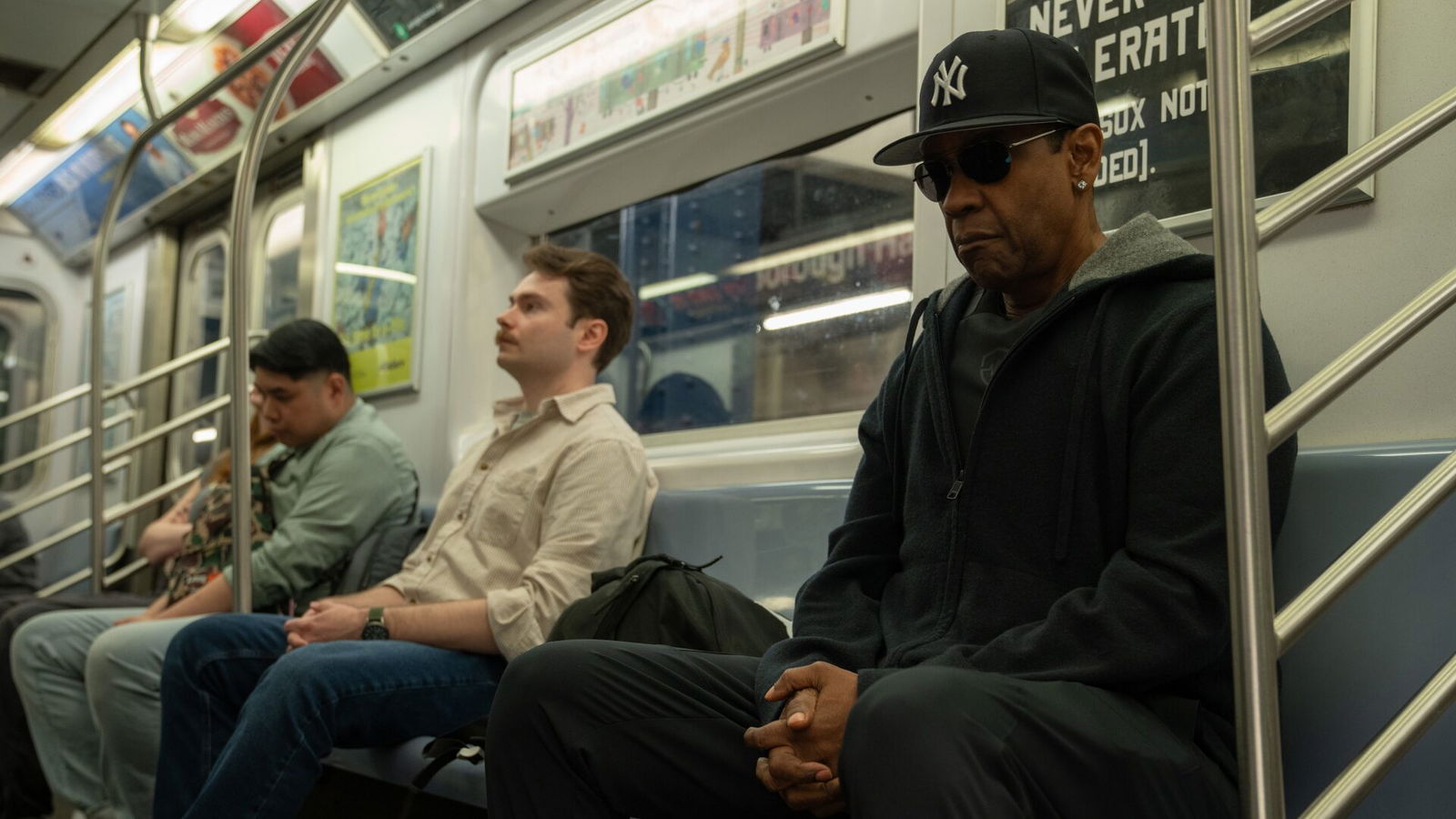
Just as he gets the money together, he receives a phone call from someone (A$AP Rocky) claiming he has kidnapped David’s son Trey (Aubrey Joseph) and is holding him hostage unless David delivers $17.5 million—entirely in Swiss francs. The only problem is, Trey is not the one missing. Instead, the kidnapper mistakenly abducted Kyle (Elijah Wright), the son of David’s chauffeur and close friend, Paul (Jeffrey Wright). Therein lies David’s moral dilemma: If he delivers the ransom money, the company is gone, along with nearly all of his fortune. If he refuses, the potential outrage over Kyle’s death could ruin him anyway.
“Thankfully, Highest 2 Lowest manages to pay homage to the original while unmistakably remaining a Spike Lee joint.”
The first half of Highest 2 Lowest plays very similarly to the original, although Spike Lee does make some odd stylistic choices, like repeatedly using two different cuts of the same line back to back. Where Spike truly surpasses the original is in developing David and Paul’s relationship. From their first scene together, it is clear these two share a deep brotherhood, and the chemistry between Denzel Washington and Jeffrey Wright is magnetic.
It makes it all the more frustrating when David is not as quick to hand over the money once it is someone else’s child on the line. The film does lean into some heavy melodrama, Howard Drossin’s score amplifies that, but it remains compelling thanks to Washington’s phenomenal performance.
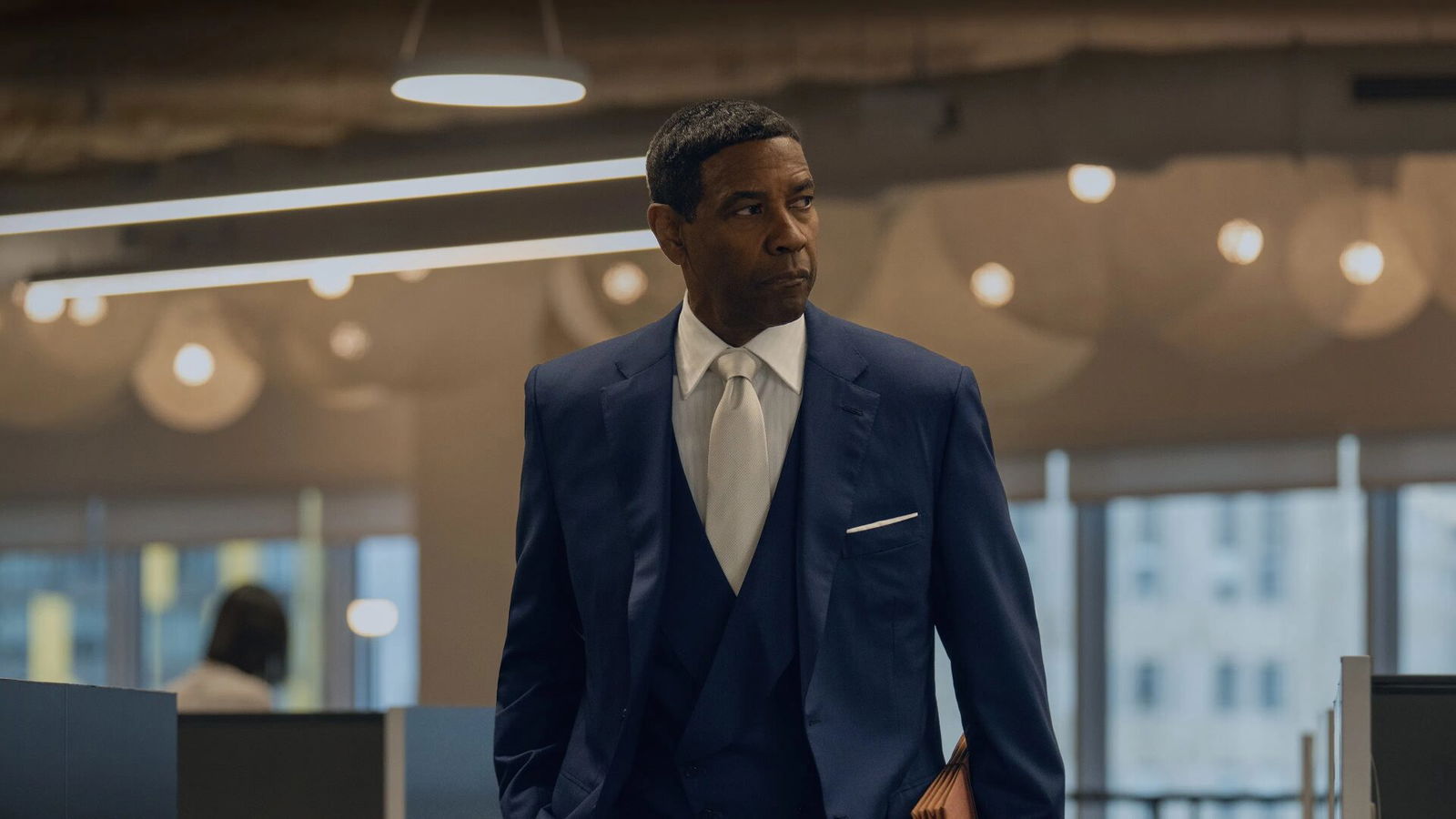
Any slight issues I had with Highest 2 Lowest’s first half were washed away by the second, which veers into its own direction and features two of the most electrifying sequences Spike Lee has ever shot. The first comes at the film’s midway point: the delivery of the ransom money on a subway packed with rowdy Yankee fans, along with a chase through the Puerto Rican Day parade. It’s also where Lee’s earlier stylistic choices begin to pay off.
Backed by a musical performance from the late Eddie Palmieri, cinematographer Matthew Libatique switches between digital and film grain during these simultaneous events, and the result is nothing short of stunning. True to Lee’s New Yorker spirit, there are plenty of hilarious anti-Boston chants throughout.
“Highest 2 Lowest feels like both Spike Lee and Denzel Washington looking directly at the camera to announce they have plenty left in the tank.”
The second sequence is a tense verbal confrontation between David and the kidnapper, an aspiring rapper, inside a recording studio. Even without a physical brawl, the back-and-forth is as exhilarating as any action scene I’ve seen this year. A$AP Rocky, in a very impressive performance, proves he can hold his own against a heavyweight like Denzel Washington. The scene also explores the modern issue of parasocial relationships with celebrities and how quickly that attachment can turn toxic.
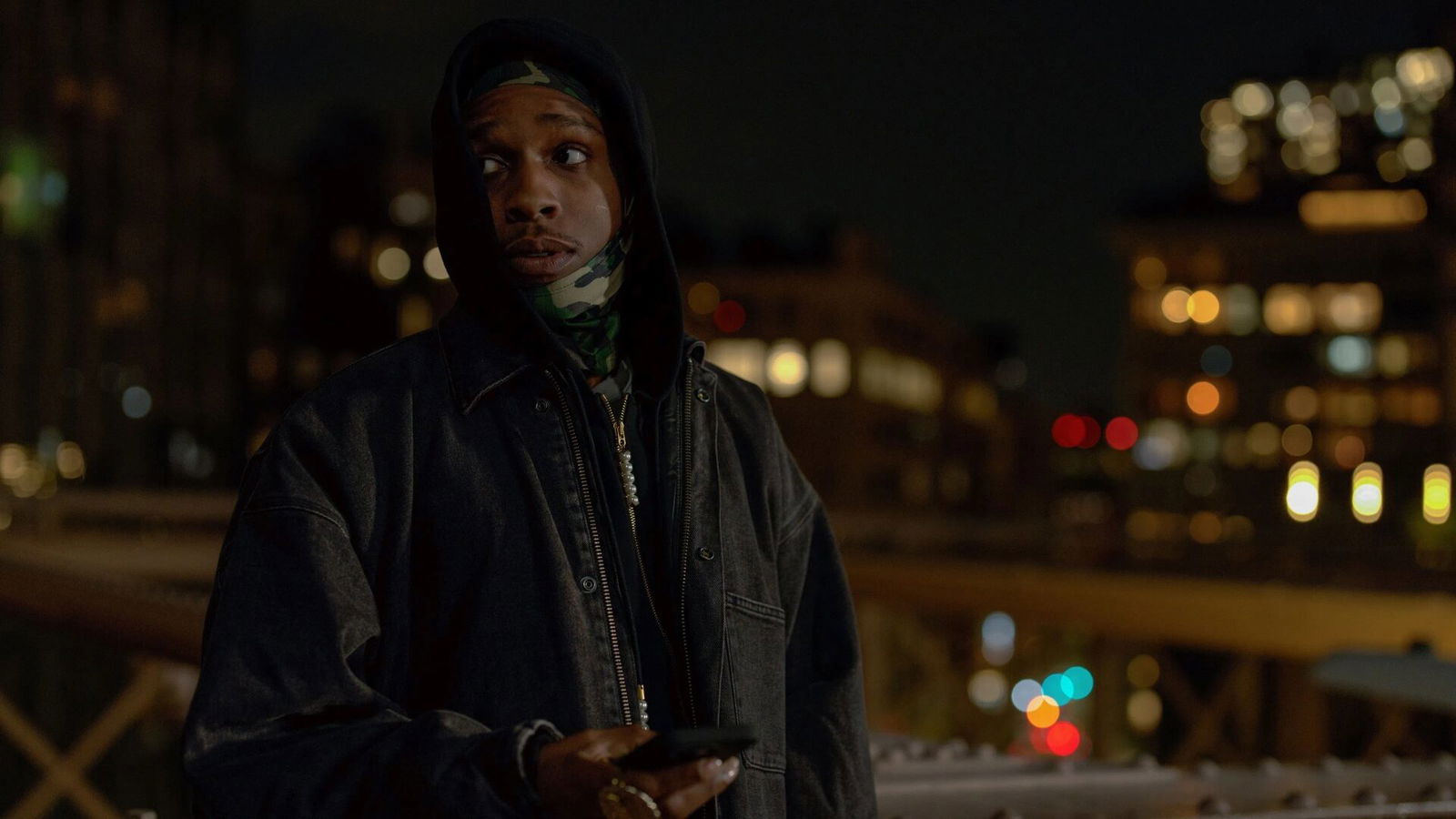
Ultimately, Highest 2 Lowest—like the original—is about class disparity, viewed this time through the lens of Blackness. David represents the ideal of Black excellence, evident from the very first shot of his penthouse towering over the city, to the opulent art within his home, to the way he swaggers into a room. In every interaction he has with anyone outside his immediate family, it is clear they aspire to reach his level—whether it’s the police officers assisting him or the kidnapper himself. That same respect is not extended to the less wealthy, like Paul, who is treated like a common criminal despite his respectable career.
Highest 2 Lowest feels like both Spike Lee and Denzel Washington looking directly at the camera to announce they have plenty left in the tank. From the looks of it, they are absolutely right.
